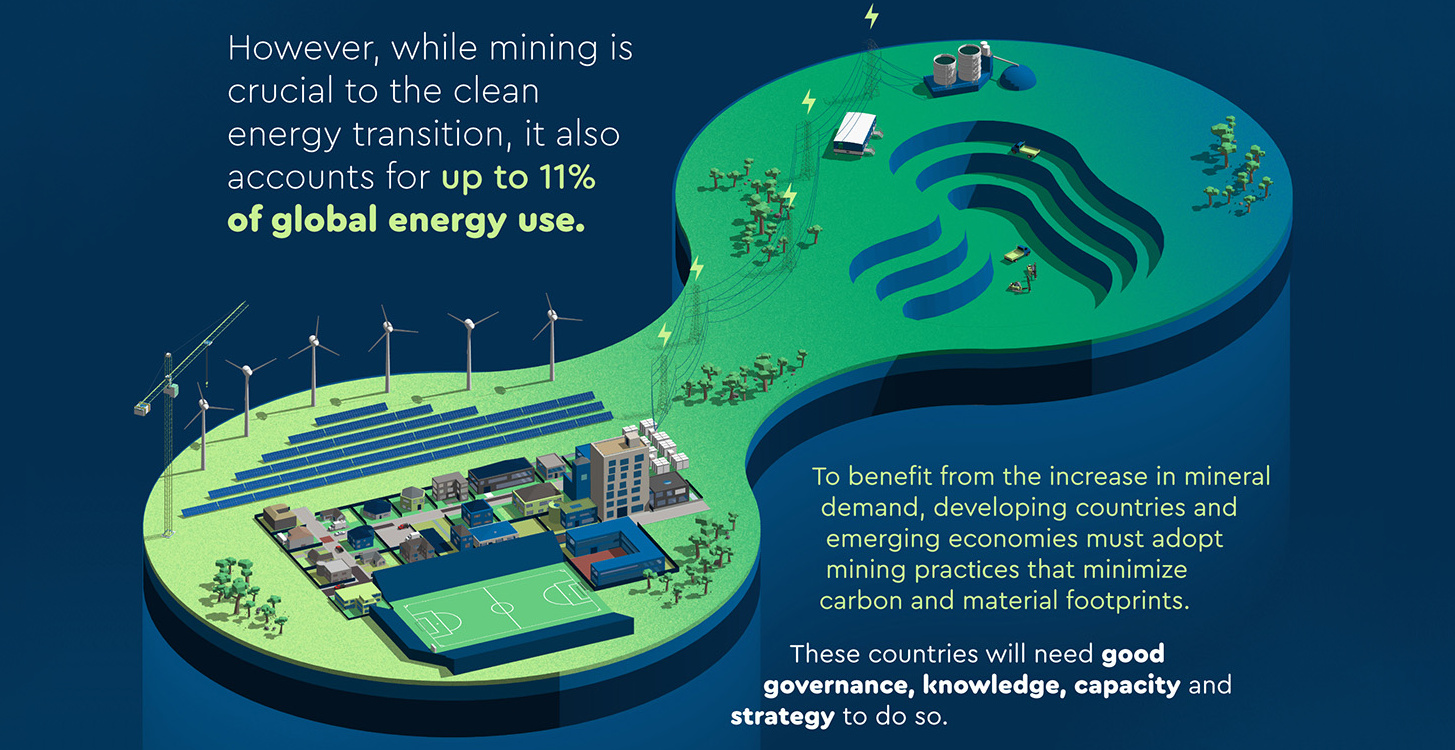Climate Smart Mining: Minerals for Climate Action
The following content is sponsored by The World Bank

Climate Smart Mining: Minerals for Climate Action
Countries are taking steps to decarbonize their economies by using wind, solar, and battery technologies, with an end goal of reducing carbon-emitting fossil fuels from the energy mix.
But this global energy transition also has a trade-off: to cut emissions, more minerals are needed.
Therefore, in order for the transition to renewables to be meaningful and to achieve significant reductions in the Earth’s carbon footprint, mining will have to better mitigate its own environmental and social impacts.
Advocates for renewable technology are not walking blindly into a new energy paradigm without understanding these impacts. A policy and regulatory framework can help governments meet their targets, mitigate, and manage the impacts of the next wave of mineral demand to help the communities most affected by mining.
Today’s infographic comes from the World Bank and it highlights this energy transition, how it will create demand for minerals, and also the Climate Smart Mining building blocks.
Renewable Power and Mineral Demand
In 2017, the World Bank published “The Growing Role of Minerals and Metals for a Low Carbon Future”, which concluded that to build a lower carbon future there will be a substantial increase in demand for several key minerals and metals to manufacture clean energy technologies.
Wind
Wind power technology has drastically improved its energy output. By 2025, a 300-meter tall wind turbine could produce about 13 to 15 MW, enough to power a small town. With increased size and energy output comes increased material demand.
A single 3 MW turbine requires:
- 4.7 tons of copper
- 335 tons of steel
- 1,200 tons of concrete
- 2 tons of rare earth elements
- 3 tons of aluminum
Solar
In 2017, global renewable capacity was 178 GW of which 54.5% was solar photovoltaic technology (PV). By 2023, it’s expected that this capacity will increase to one terawatt with PV accounting for 57.5% of the mix. PV cells require polymers, aluminum, silicon, glass, silver, and tin.
Batteries
Everything from your home, your vehicle, and your everyday devices will require battery technology to keep them powered and your life on the move.
Lithium, cobalt, and nickel are at the center of battery technology that will see the greatest explosion in demand in the coming energy transition.
Top Five Minerals for Energy Technologies
Add it all up, and these new sources of demand will translate into a need for more minerals:
| 2017 Production | 2050 Demand from Energy Technology | Percentage Change (%) | |
|---|---|---|---|
| Lithium | 43 KT | 415 KT | 965% |
| Cobalt | 110 KT | 644 KT | 585% |
| Graphite | 1200 KT | 4590 KT | 383% |
| Indium | 0.72 KT | 1.73 KT | 241% |
| Vanadium | 80 KT | 138 KT | 173% |
Minimizing Mining’s Impact with Climate Smart Mining
The World Bank’s Climate Smart Mining (CSM) supports the sustainable extraction and processing of minerals and metals to secure supply for clean energy technologies, while also minimizing the environmental and climate footprints throughout the value chain.
The World Bank has established four building blocks to Climate Smart Mining:
- Climate Change Mitigation
- Climate Change Adaptation
- Reducing Material Impacts
- Creating Market Opportunities
Given the foresight into the pending energy revolution, a coordinated global effort early on could give nations a greater chance to mitigate the impacts of mining, avoid haphazard mineral development, and contribute to the improvement of living standards in mineral-rich countries.
The World Bank works closely with the United Nations to ensure that Climate Smart Mining policies will support the 2030 Sustainable Development Goals.
A Sustainable Future
The potential is there for a low carbon economy, but it’s going to require a concerted global effort and sound policies to help guide responsible mineral development.
The mining industry can deliver the minerals for climate action.
-

 Sponsored3 years ago
Sponsored3 years agoMore Than Precious: Silver’s Role in the New Energy Era (Part 3 of 3)
Long known as a precious metal, silver in solar and EV technologies will redefine its role and importance to a greener economy.
-

 Sponsored7 years ago
Sponsored7 years agoThe History and Evolution of the Video Games Market
Everything from Pong to the rise of mobile gaming and AR/VR. Learn about the $100 billion video games market in this giant infographic.
-

 Sponsored8 years ago
Sponsored8 years agoThe Extraordinary Raw Materials in an iPhone 6s
Over 700 million iPhones have now been sold, but the iPhone would not exist if it were not for the raw materials that make the technology...
-

 Sponsored8 years ago
Sponsored8 years agoThe Industrial Internet, and How It’s Revolutionizing Mining
The convergence of the global industrial sector with big data and the internet of things, or the Industrial Internet, will revolutionize how mining works.


